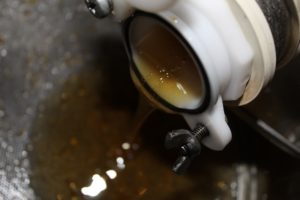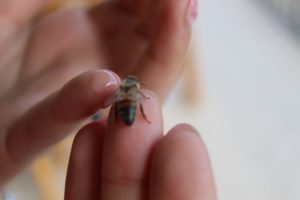
Prosegue la collaborazione fra il Liceo Linguistico “Cattaneo-Dall’Aglio” e Redacon.
"Speakeasy", una rubrica curata dagli studenti.
Hello everybody!
Today I’m going to talk about an uncommon topic: “Honey and Bees “
Maybe you are asking yourselves why this topic, well the reason goes back as far as 2008.
That year my father decided to start beekeeping: at first he had only three bee yards but then he got into beekeeping and now he has quite a number of bee yards. For him bees are little workers, able to do a very big work: support the environment. He cares a lot about them and his love is the reason why I’m writing this.
We are used to eating honey and to having it in our homes, but do we really know what we are eating? Well, honey is composed of two monosaccharides, which are fructose and glucose, and by a quantity of water, which is about 18% of the total. Its physical and nutritional features are due to its composition. It reaches our tables thanks to the hard work of the beekeeper, who has to work all year round in order to take care of bees and produce honey.

An obvious question which could come to mind is: “Why does the beekeeper need to take care of bees? Why are they not able to survive without his help?”
The answer is not so easy as the question. In fact there are various causes to take into account. First of all the the bees’ existence is rather precarious due to some kinds of insects (like vespa vellutina, varroa...). An additional factor is environmental pollution and the use of pesticides by the local farmers which increase the percentage of the dead bee yards.

Now the question that we have to ask ourselves is “Why does the production of Honey increase if more and more bees die?”
The answer is easy: Honey Adulteration.
Honey adulteration is the presence on the market of honey which is mostly composed of sugar. Thus we eat something that is not good for our health.
(These statistics are taken from the magazine “ L’apis “ N 8/2018 November)
There are many steps we can take in order to change how things stand. Although the relation between bees and our life is thought to be inessential, we are strictly connected to them. Thanks to pollination they allow us to breathe and give us nourishment and they are the sentinels of the environnement. In fact they are extremely sensitive to the chemical molecules emanated by pesticides and the pollution caused by human activities.
There’s a lot we can do, but we need to start right now if we want to make a difference.
***
Traduzione.
Ciao a tutti!

Oggi parlerò di un tema poco comune: "Miele e Api”.
Magari vi starete chiedendo come mai questo tema: la ragione risale al lontano 2008, quando mio padre decise di iniziare a fare l'apicoltore; inizialmente aveva solamente tre alveari, poi si è appassionato sempre di più e ora ne ha un grande numero.
Per lui le api sono come dei piccoli operai in grado di compiere un grande lavoro: supportare l'ambiente.
Lui si dedica a loro con grande impegno e il suo amore è il motivo per cui oggi scrivo.
Noi siamo abituati a mangiare miele e ad averlo nelle nostre case, ma sappiamo veramente cosa stiamo mangiando? Bene, il miele è composto da due monosaccaridi che sono il fruttosio e il glucosio e da una quantità di acqua pari a circa il 18% del totale.

Le sue caratteristiche fisiche e nutrizionali sono dovute alla sua composizione. Raggiunge le nostre tavole grazie al duro lavoro dell'apicoltore che lavora tutto l'anno per curare le api e produrre miele.
Una domanda ovvia che ci si potrebbe porre è: "Perché l'apicoltore si deve prendere cura delle api? Perché non sono capaci di sopravvivere senza il suo aiuto?" La risposta a questa domanda non è così semplice. Infatti, ci sono molto cause da considerare.
Innanzitutto l'esistenza delle api è precaria a causa di alcuni insetti (come vespa vellutina, varroa…). Un fattore aggiuntivo è l'inquinamento ambientale e l'uso di pesticidi da parte degli agricoltori locali che aumentano la percentuale di api morte negli alveari.

Ora la domanda che dobbiamo porci è: "Perché la produzione del miele aumenta se sempre più api muoiono ?"
La risposta è semplice: Adulterazione del Miele.
L'adulterazione del miele è la presenza sul mercato di miele che è composto per la maggior parte da zucchero. Cosicché noi mangiamo qualcosa che non è sano per la nostra salute.
Ci sono molte cose che potremmo fare per cambiare la situazione. Nonostante la relazione tra le api e la nostra vita sia considerata non essenziale, noi siamo strettamente connessi a esse.
Grazie all'impollinazione ci permettono di respirare e di nutrirci oltre a essere le sentinelle dell'ambiente. Infatti, esse sono estremamente sensibili alle molecole chimiche emanate dai pesticidi e all'inquinamento causato dalle attività umane.
C'è molto che possiamo fare ma dobbiamo iniziare subito se vogliamo fare la differenza.









